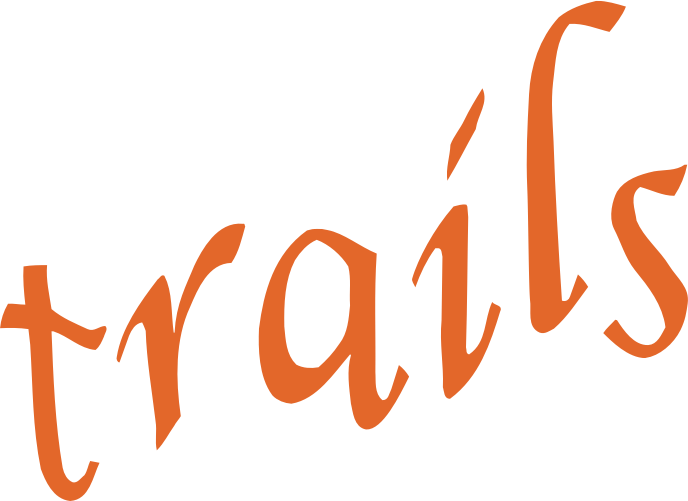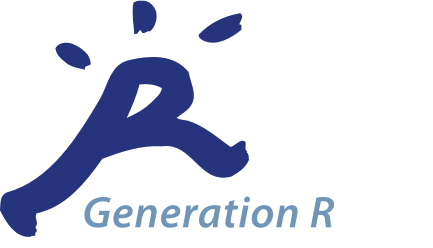-
measure Amsterdam Neuropsychological Tasks (ANT)
Study: NTR Mode of collection: MeasurementsAndTests Behavioral/cognitive task Available measurements: Young Netherlands Twin Register YE_ATTEF1 YE_ATTEF2The Amsterdam Neuropsychological Tasks (ANT) are computerized executive functioning tasks. The ANTs measure a diverse range of executive functions, including attention, working memory, and inhibition.Created March 28, 2023 • Updated April 4, 2023 -
measure Amsterdam Neuropsychological Tasks (ANT)
Study: TRAILS Mode of collection: MeasurementsAndTests Behavioral/cognitive task Available measurements: Population cohort T1 T4
Clinical cohort T1 T4The Amsterdam Neuropsychological Tasks (ANT) are computerized executive functioning tasks. The ANTs measure a diverse range of executive functions, including attention, working memory, and inhibition.Created March 28, 2023 • Updated March 28, 2023 -
measure Approach Avoidance Test (AAT)
Study: TRAILS Mode of collection: MeasurementsAndTests Behavioral/cognitive task Available measurements: Population cohort T4Validated assessment of implicit action tendencies towards emotional facial expressions. The participants have to push (approach) or pull (avoid) a joystick when presented with emotional facial expressions. Includes male and female faces and neutral, happy, angry, and disgusted facial expressions.Created March 28, 2023 • Updated March 28, 2023 -
measure Auditory Continuous Performance Test for Preschoolers (ACPT-P)
Study: Generation R Mode of collection: MeasurementsAndTests Behavioral/cognitive task Available measurements: Main Cohort 4 yearsThe Auditory Continuous Performance Test for Preschoolers (ACPT-P) is a tool used to assess the auditory attention and sustained attention abilities of preschool-aged children. It involves a series of auditory stimuli presented to the child, and the child is required to respond to specific target stimuli.Created May 3, 2023 • Updated May 3, 2023 -
measure Behavior Rating Inventory of Executive Function (BRIEF)
Study: Generation R Mode of collection: SelfAdministeredQuestionnaire Available measurements: Main Cohort 4 years 13-14 yearsBrief Rating Inventory of Executive Function was administered, measuring inhibition, shifting, emotional control, working memory, and planning functions.Created May 3, 2023 • Updated May 3, 2023 -
measure CITO score
Study: L-CID Mode of collection: MeasurementsAndTests Behavioral/cognitive task Available measurements: Middle Childhood Cohort T6The CITO-test is a standardized test for educational achievement that is administered in the final grade (when children are 11 or 12 years old) of elementary school. The CITO-test consists of multiple choice items in 4 different educational skills, namely Arithmetic, Language, Study Skills, and Science and Social Studies. All scores on the scales are...Created March 28, 2023 • Updated March 28, 2023 -
measure CITO score
Study: NTR Mode of collection: MeasurementsAndTests Behavioral/cognitive task Available measurements: Young Netherlands Twin Register YS_TRF5 YS_TRF7 YS_TRF10 YS_12 YS_TRF12 YS_DHBQP YS_DHBQ14 YS_DHBQ16 YS_DHBQ18 YC_BS1 YC_BS2 YE_ATTEF2 YS_CITO YS_DT YS_TRIP12The CITO-test is a standardized test for educational achievement that is administered in the final grade (when children are 11 or 12 years old) of elementary school. The CITO-test consists of multiple choice items in 4 different educational skills, namely Arithmetic, Language, Study Skills, and Science and Social Studies. All scores on the scales are...Created March 28, 2023 • Updated April 4, 2023 -
measure CITO score
Study: Generation R Mode of collection: MeasurementsAndTests,SelfAdministeredQuestionnaire Behavioral/cognitive task Available measurements: Main Cohort 13-14 yearsThe CITO-test is a standardized test for educational achievement that is administered in the final grade (when children are 11 or 12 years old) of elementary school. The CITO-test consists of multiple choice items in 4 different educational skills, namely Arithmetic, Language, Study Skills, and Science and Social Studies. All scores on the scales are...Created May 3, 2023 • Updated May 3, 2023 -
measure California Verbal Learning Test (CVLT)
Study: NTR Mode of collection: MeasurementsAndTests Behavioral/cognitive task Available measurements: Young Netherlands Twin Register YE_COG18The California Verbal Learning Test (CVLT) is a measure of verbal learning and memory. In this task, a list of 16 items, with four words from each of four categories (fruits; herbs and spices; clothing; tools) is presented. The list is presented five times, and the participant is instructed to recall as many words as possible from the list following each...Created March 28, 2023 • Updated April 4, 2023 -
measure Child Gap Antisaccade
Study: YOUth Mode of collection: MeasurementsAndTests Eyetracking Available measurements: Baby and Child 6 years
Child and Adolescent 9 years 12 yearsThe Gap-overlap task is a gaze contingent paradigm that measures visual attention shifting between a central and a peripheral stimulus. This is thought to be a key sub process underlying behavioral control. The Gap-overlap task contains three conditions; i) Gap, in which the central stimulus disappears 200ms before the appearance of the peripheral target;...Created March 28, 2023 • Updated March 30, 2023 -
measure Child Gap Prosaccade
Study: YOUth Mode of collection: MeasurementsAndTests Eyetracking Available measurements: Child and Adolescent 9 years 12 yearsThe Gap-overlap task is a gaze contingent paradigm that measures visual attention shifting between a central and a peripheral stimulus. This is thought to be a key sub process underlying behavioral control. The Gap-verlap task contains three conditions; i) Gap, in which the central stimulus disappears 200ms before the appearance of the peripheral target;...Created March 28, 2023 • Updated March 30, 2023 -
measure Childhood Executive Functioning Inventory (CHEXI)
Study: TRAILS Mode of collection: SelfAdministeredQuestionnaire Available measurements: The Next Generation T4 T5Validated assessment of executive functioning. Includes inhibition, regulation, working memory, and planning.Created March 28, 2023 • Updated March 28, 2023 -
measure Clinical Evaluation of Language Fundamentals (CELF) - Pragmatics
Study: YOUth Mode of collection: SelfAdministeredQuestionnaire Available measurements: Baby and Child 3 years 6 years
Child and Adolescent 9 years 12 yearsThe Clinical Evaluation of Language Fundamentals (CELF) was designed to assess general language ability and specific language domains, and screen for language disorders in children and youth between 5 and 18 years. The Preschool version is meant for toddlers between 3 and 6 years old. The CELF consists of many subscales, such as Concepts and Following...Created March 28, 2023 • Updated March 30, 2023 -
measure Columbia Card Task (CCT)
Study: Generation R Mode of collection: MeasurementsAndTests Behavioral/cognitive task Available measurements: Main Cohort 9-10 yearsThe Columbia Card Task (CCT) is a psychological test that measures cognitive functions related to executive functioning, such as planning, set shifting, decision-making, and inhibitory control. During the CCT, participants are presented with a deck of cards and are required to sort the cards based on different categories, with the rules for sorting...Created May 3, 2023 • Updated May 3, 2023 -
measure Conners' Parent Rating Scale - Revised Short Form (CPRS-R)
Study: Generation R Mode of collection: SelfAdministeredQuestionnaire Available measurements: Main Cohort 8 yearsThe Conners’ Parent Rating Scale–Revised Short Form was used to assess attention problems in children. This questionnaire contains 27-items and includes attention problems and symptoms of the oppositional defiant disorder.Created May 3, 2023 • Updated May 3, 2023 -
measure Controlled Oral Word Association task (COWA)
Study: NTR Mode of collection: MeasurementsAndTests Behavioral/cognitive task Available measurements: Young Netherlands Twin Register YC_BS1The Controlled Oral Word Association task (COWA) is a subtest of the Multilingual Aphasia Exam that measures verbal fluency.Created March 28, 2023 • Updated April 4, 2023 -
measure Corsi block-tapping task
Study: NTR Mode of collection: MeasurementsAndTests Behavioral/cognitive task Available measurements: Young Netherlands Twin Register YC_BS1 YC_BS2 YC_BS3 YE_COG18The Corsi block tapping task assesses short-term spatial memory.Created March 28, 2023 • Updated April 4, 2023 -
measure Delay Discounting - hypothetical
Study: YOUth Mode of collection: MeasurementsAndTests Behavioral/cognitive task Available measurements: Child and Adolescent 9 years 12 yearsThe Delay Discounting task is the most widely used paradigm to measure the capacity to wait for a hypothetical monetary reward in children between 8-18 years old. A child is given a series of option between a variable immediate monetary reward and 10 Euros after a certain delay. The delay of the 10 Euro reward varies between 2, 30, 180, or 365 days. Each...Created March 28, 2023 • Updated March 30, 2023 -
measure EEG Coherence
Study: YOUth Mode of collection: MeasurementsAndTests EEG Available measurements: Baby and Child 5 months 10 months 3 years 6 yearsThis task serves two purposes: first, to observe how the developing brain signal decomposes into separate frequency bands as a function of what the child sees; second: to understand how the connectivity among different areas of the developing brain develops. Infants passively watch 60-second video clips depicting singing women or moving toys while we...Created March 28, 2023 • Updated March 30, 2023 -
measure EEG Face Emotion
Study: YOUth Mode of collection: MeasurementsAndTests EEG Available measurements: Baby and Child 10 months 3 years 6 yearsTo understand how the developing brain differentially responds to viewing faces with different facial expressions (happy and fear), young children (from 10 months onwards) passively watch pictures of happy or fearful faces while we measure their EEG. Note that the same faces but with neutral expressions have been presented in EEG Face House experiment....Created March 28, 2023 • Updated March 30, 2023





